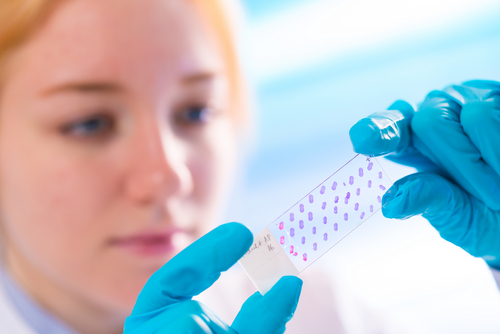PU.1 Inhibition May Help Treat PF, Other Fibrotic Disorders

A protein called PU.1 plays a central role in the deposition of connective tissue during fibrosis, according to new research. The findings also suggested that blocking PU.1 may be a therapeutic strategy for pulmonary fibrosis and other fibrotic disorders.
The study, “PU.1 controls fibroblast polarization and tissue fibrosis,” was published in the journal Nature.
Fibroblasts are cells that in normal conditions promote progressive buildup of extracellular matrix (ECM) — which provides biochemical and structural support to cells — and the initiation of fibrosis, or scarring, in the lungs, liver, kidneys, gut, and skin.
In chronic inflammatory diseases, fibroblasts — the most common cell type of connective tissue — contribute to breaking down the ECM, and promote excessive fibrosis.
Aiming to understand the mechanisms driving these two opposite roles, an international team led by researchers at Germany’s Friedrich-Alexander-University (FAU) used a range of molecular biology and imaging tools in human cells, and in five different models of fibrosis.
The team analyzed lung tissue from four patients with idiopathic pulmonary fibrosis and five with asthma. In addition, skin biopsies were collected from 25 patients with scleroderma, and seven with plaque psoriasis. Liver samples were also collected from four patients with alcoholic liver cirrhosis, and four with autoimmune hepatitis.
Cirrhotic kidneys from four patients with end-stage renal disease were used to assess fibrotic kidney tissue. Samples of synovial tissue — connective tissue that lines the inner surface of joints — were also obtained from five people with rheumatoid arthritis, and five with osteoarthritis. Samples from healthy subjects (controls) were also analyzed.
Results revealed that among 58 transcription factors — tiny proteins involved in gene expression — with increased presence in regulatory sequences of pro-fibrotic genes, PU.1 was the one with the highest levels.
In line with this finding, researchers saw that the production of PU.1, a key factor in the differentiation of immune cells, was increased in fibroblasts of the fibrotic diseases assessed.
Subsequent experiments revealed that genetic deletion of PU.1 in human fibroblasts led to a lower release of collagen. In turn, PU.1 overexpression induced a transition from resting fibroblasts to a highly activated, pro-fibrotic profile with increased collagen release.
In mice, deletion of the SPI1 gene — which codes for PU.1 in the animals — eased fibrosis.
When evaluating what drives the differential expression of PU.1, researchers found that the pro-fibrotic factor TGF-beta increased the levels of PU.1 in fibrotic fibroblasts.
The team also found that epigenetic changes — changes in gene expression, rather than in the gene itself — in the SPI1 gene in mice inhibited the generation of PU.1 in inflammatory and ECM-degrading fibroblasts.
Data further showed that blocking PU.1 with a compound called DB1976 lowered the activity of collagen-related genes. DB1976 also had anti-fibrotic effects in animal models of fibrosis, both preventing skin fibrosis and inducing fibrosis regression.
Researchers also showed that in a 3D organoid (tissue culture), the extra production of PU.1 in inflammatory fibroblasts increased the expression of fibrosis-associated genes, associated with collagen deposition and skin thickening, whereas blockade of PU.1 inhibited the expression of pro-fibrotic genes.
“We were able to show that PU.1 is activated in various connective tissue diseases in the skin, lungs, liver, and kidneys,” Andreas Ramming, the study’s senior author, said in a press release. “PU.1 binds to the DNA in the connective tissue cells and reprograms them, resulting in a prolonged deposition of tissue components.”
“PU.1 is like the conductor in an orchestra — if you take it out, the entire concert collapses,” Ramming said.
Based on the results, the team suggested that “PU.1 inhibition may represent an effective therapeutic approach to treat a wide range of fibrotic diseases.”







